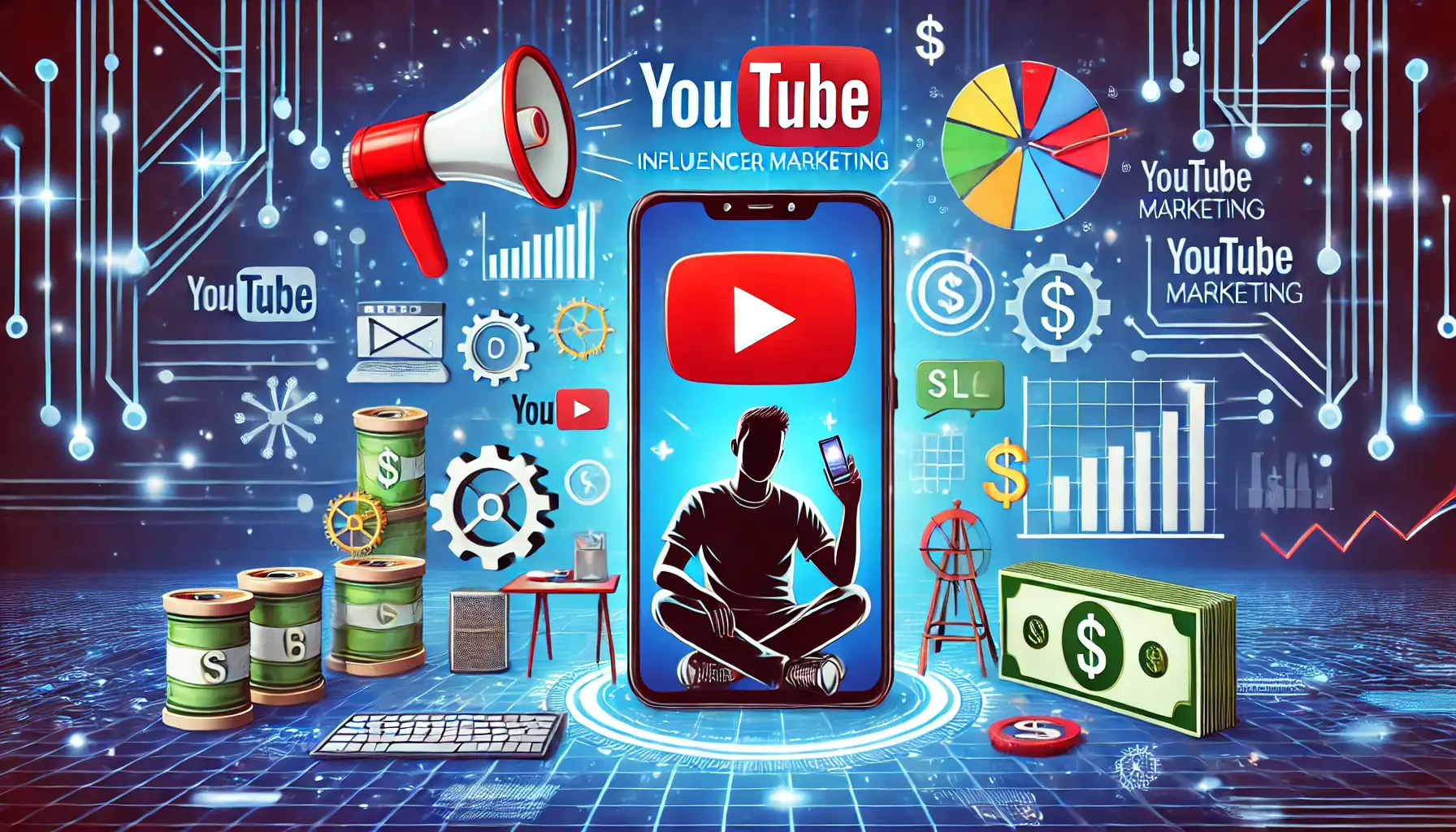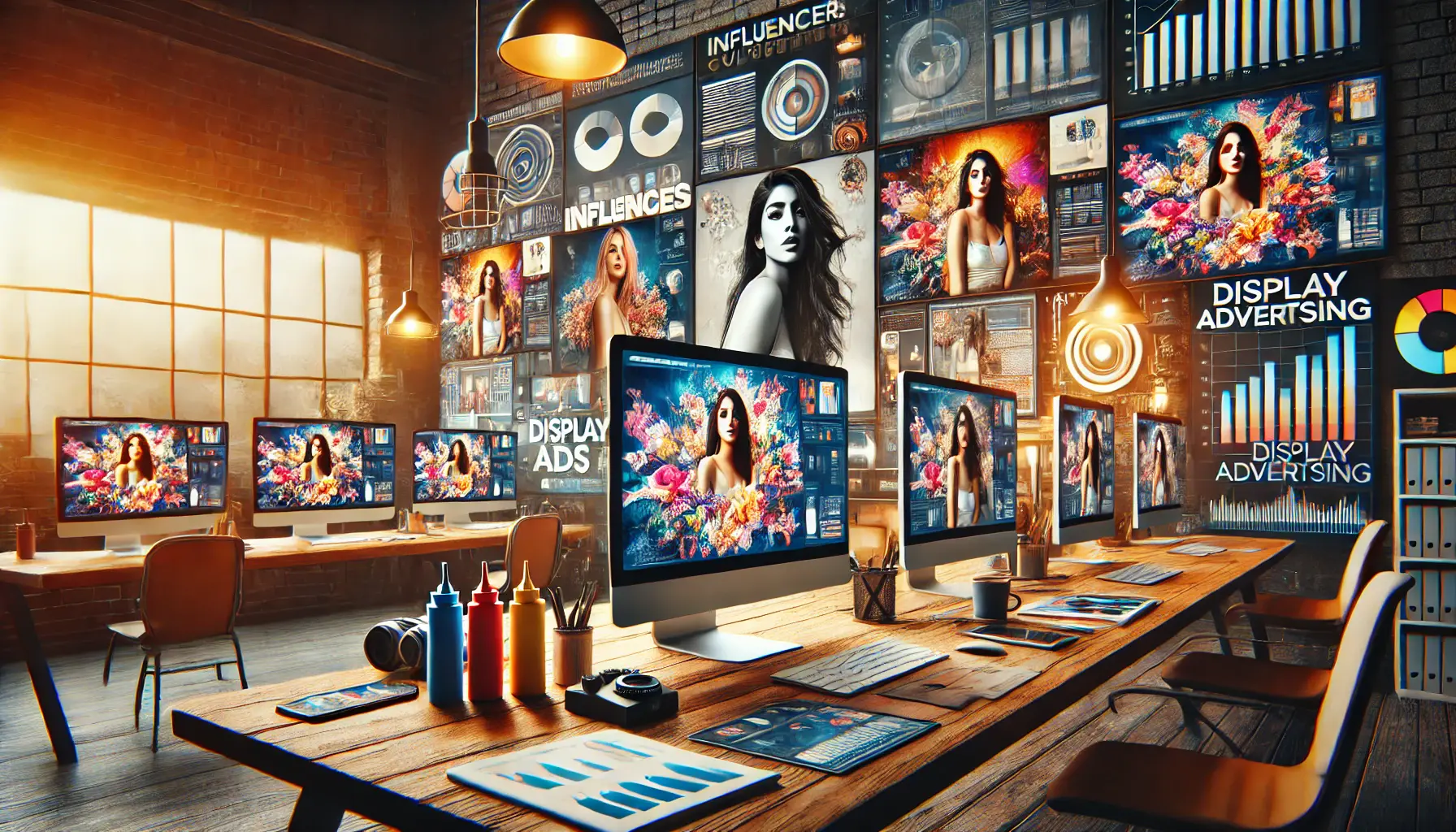In the digital era, LinkedIn has emerged as a popular destination for professionals and organizations alike.
Its very existence as a professional networking site offers special opportunities for brands to connect with leaders and influencers in their own fields.
Effective influencer collaboration can contribute significantly to expanding your brand’s reach and credibility.
Let us consider strategies to make your influencer collaboration on LinkedIn more effective.
- Identify and Engage Relevant LinkedIn Influencers
- Establish Clear Collaboration Objectives
- Develop Valuable and Authentic Content
- Measure and Analyze Collaboration Outcomes
- Foster Long-Term Influencer Relationships
- Maximizing Success through Influencer Collaboration on LinkedIn
- Frequently Asked Questions about Influencer Collaboration on LinkedIn
Identify and Engage Relevant LinkedIn Influencers
Going through influencer collaboration involves a strategic process of discovering and partnering with individuals who align with your brand’s values and target market.
Here’s how you can undertake this process:
Define Your Target Audience
Knowing your target audience is the foundation of any marketing plan.
Ask yourself questions such as:
- Who are your best clients or customers?
- What are their industries?
- What are their pain points?
By understanding these aspects, you can identify the kind of content and influencer collaboration that will resonate with them.
Research Industry Thought Leaders
After identifying your audience, your next step is to look for the influencers who sway their opinions.
Look for professionals who:
- Post relevant content regularly that matters to your company.
- Engage frequently with their followers in the form of conversations and comments.
- Have a significant following that aligns with your target audience.
Appealing to such influencers has the potential to position your brand in front of an engaged and open audience.
Measure Influencer Engagement Metrics
It’s not just the number of followers that matters; interaction quality is more critical.
Evaluate potential influencers based on:
- Engagement Rate: A higher percentage indicates stronger content engagement.
- Content Relevance: Their updates should align with your brand message.
- Audience Feedback: Positive shares and comments signify trust and authority.
These factors provide a clearer indication of an influencer’s impact and compatibility with your brand.
Make Use of LinkedIn’s Advanced Search Features
LinkedIn offers powerful features to streamline your influencer collaboration search:
- Advanced Search: Filter professionals by industry, location, and more to select potential influencers.
- Content Search: Discover posts that contain specific hashtags or keywords relevant to your domain.
- Groups and Communities: Join industry-centric groups to observe active contributors and thought leaders.
With these tools, you can identify active and relevant influencers in your business domain.
By methodically uncovering and engaging with the right LinkedIn influencers, you establish a strong foundation for influencer collaboration that enhances the visibility and authority of your brand in the professional world.
Identifying the right influencers is crucial for effective collaboration. Focus on engagement, relevance, and industry alignment to ensure your brand reaches the right audience.
Establish Clear Collaboration Objectives
Embarking on a successful influencer collaboration on LinkedIn requires setting clear and measurable objectives.
This foundational step ensures both your brand and the influencer are aligned, paving the way for a fruitful partnership.
Here’s how to establish these objectives effectively:
Set Measurable Goals
Set clear goals you wish to achieve through the collaboration.
Do you need to increase brand visibility, generate site traffic, acquire leads, or improve sales?
Having these goals clearly defined provides direction and a basis for measuring success.
For instance, increasing brand mentions on LinkedIn by 20% within three months is a measurable goal.
Align Objectives with Influencer Expertise
Ensure the influencer’s audience and content are relevant to your brand’s purpose.
If you’re targeting a specific audience or industry niche, collaborate with influencers who already have a strong presence in that space.
This alignment enhances the authenticity and effectiveness of your influencer collaboration campaign.
Set Key Performance Indicators (KPIs)
Determine what metrics will be used to gauge the success of your influencer collaboration.
Common KPIs include:
- Engagement Rate: Tracks likes, comments, and shares on the influencer’s posts about your brand.
- Reach: Measures the number of unique viewers who see the content.
- Click-Through Rate (CTR): Percentage of viewers who click on a link within the content.
- Conversion Rate: Percentage of users performing a desired action, such as signing up for a newsletter or making a purchase.
Having established these KPIs, it becomes easier to objectively measure the impact of the collaboration.
Develop a Complete Collaboration Plan
Outline the specifics of the collaboration, including content types, posting schedules, and promotion strategies.
A well-detailed plan ensures that both parties understand their responsibilities and timelines, making the process more efficient.
Regular check-ins and feedback sessions help keep things aligned and resolve any issues ahead of time.
By setting definite influencer collaboration objectives, you create a roadmap that directs the partnership towards achieving desired outcomes, making your LinkedIn influencer collaborations more strategic and impactful.
Setting clear and measurable objectives ensures both parties align towards a successful campaign. Define your goals, set KPIs, and establish expectations early on.
Develop Valuable and Authentic Content
Developing valuable and authentic content is central to effective influencer collaboration on LinkedIn.
By co-creating content that resonates with your target audience, you not only boost engagement but also establish credibility.
Here’s how you can do it:
Co-Create Informative Articles
Working with influencers to create informative posts can significantly enhance your brand’s exposure.
Post content that aligns with both your brand message and the influencer’s niche.
This ensures that the content is not only genuine but also engaging for readers.
For instance, co-authoring a post on industry trends can establish both partners as thought leadersInfluential professionals who provide valuable insights and expertise within a specific industry or field..
Host Joint LinkedIn Live Sessions
Engaging your viewers in live interactions can foster a deeper connection.
Hosting LinkedIn LiveA live streaming feature on LinkedIn that allows users to broadcast real-time video content to their audience. sessions with influencers provides a platform for real-time discussions, Q&A, and highlights an interactive collaboration.
To ensure a successful stream:
- Choose a relevant topic: Pick topics that relate to your audience’s interests and address their pain points.
- Promote the event: Use both networks to maximize exposure and attract more attendees.
- Engage during the session: Respond to audience questions and comments in real-time to make the session interactive.
According to LinkedIn Marketing Solutions, going live on LinkedIn Live involves steps like choosing a streaming tool, linking it, creating the event, setting up your livestream, and broadcasting live.
Share Success Stories and Case Studies
Highlighting collaboration achievements creates social proof of your brand’s value.
Work with influencers to share success case studies or testimonials where your product or service made a meaningful impact.
This not only builds confidence but also demonstrates real-world relevance.
Utilize LinkedIn’s Native Features for Engagement
Leverage LinkedIn’s native featuresPlatform-specific tools and functionalities designed to enhance user engagement and content visibility. to enhance content visibility and engagement:
- Articles: Develop long-form content to provide in-depth insights.
- Posts: Share updates, ideas, and quick thoughts to engage your audience consistently.
- Polls: Conduct polls to collect feedback and encourage participation.
- Videos: Share short videos to deliver content in an engaging and interactive way.
By integrating these features, you can maintain a comprehensive content strategy that reaches and engages a wider audience.
Incorporating these strategies into your influencer collaboration efforts on LinkedIn can lead to more authentic engagements and valuable content, ultimately strengthening your brand’s presence on the platform.
Co-creating authentic content with influencers helps boost credibility and engagement. Leverage live sessions, case studies, and LinkedIn’s native features to maximize impact.
Measure and Analyze Collaboration Outcomes
Assessing the success of your influencer collaboration on LinkedIn is necessary to enhance strategies and generate a strong return on investment.
By systematically measuring and analyzing outcomes, you can identify strengths, address weaknesses, and improve future campaigns.
Here’s how to effectively measure your collaborations:
Track Engagement Metrics
Engagement metrics provide insight into how your audience interacts with content developed through influencer collaboration.
Primary metrics include:
- Likes and Reactions: Quantify immediate audience approval and interest.
- Comments: Encourage deeper engagement and initiate conversations.
- Shares: Indicate content value and extend its reach beyond the initial audience.
Monitoring these metrics helps measure how well your content resonates with the target audience.
Measure Lead Generation Success
One major goal of influencer collaboration is generating quality leads.
Track this by measuring:
- Click-Through Rate (CTR): The percentage of viewers who click embedded links within the content.
- Conversion Rate: The proportion of clicks leading to desired actions such as newsletter subscriptions or resource downloads.
Strong CTRs and conversion rates indicate effective content and well-targeted audiences.
Gather Audience Feedback
Direct audience feedback provides qualitative insights into your collaboration’s impact.
Consider the following:
- Surveys and Polls: Collect audience opinions regarding the relevance and value of the content.
- Sentiment Analysis: Analyze comments to measure overall audience perception and satisfaction.
Feedback can reveal areas for improvement and highlight the most effective aspects of your strategy.
Refine Strategies Based on Data Insights
Leverage the data collected to strengthen future influencer collaboration efforts:
- Identify High-Performing Content: Replicate successful content formats and topics in future campaigns.
- Adjust Targeting: Optimize audience segmentation based on engagement and conversion data to maximize reach.
- Optimize Posting Schedules: Determine the best times to publish content to increase visibility and engagement.
Ongoing monitoring and adjustments ensure your influencer collaboration remains effective and aligned with evolving audience preferences.
By regularly measuring and analyzing collaboration outcomes, you can make data-driven decisions that enhance your brand’s visibility and success on LinkedIn.
Tracking engagement metrics and audience feedback is essential to refining influencer strategies. Use data insights to enhance future collaborations and maximize ROI.
Foster Long-Term Influencer Relationships
Creating long-term influencer collaboration on LinkedIn is essential for sustained success in your campaigns.
Long-term partnerships not only build credibility but also generate consistent and repeatable results.
Here’s how to establish and maintain these valuable relationships:
Maintain Ongoing Communication
Regular, open communication is the foundation of any successful collaboration.
Engage influencers by:
- Holding Regular Check-ins: Keep both parties aligned on goals and expectations.
- Providing Constructive Feedback: Offer insights to enhance content and strategy.
- Sharing Updates: Inform influencers about new products, services, or company developments.
Proactive communication ensures trust and helps maintain a unified strategy.
Provide Mutual Value and Support
Successful influencer collaboration is based on mutual benefits.
To create a lasting partnership:
- Provide Competitive Compensation: Ensure influencers feel valued for their contributions.
- Promote Their Content: Share and endorse the influencer’s content within your network.
- Partner on Their Initiatives: Support influencer-led projects or causes relevant to their audience.
This mutual support strengthens the bond and enhances long-term relationships.
Adapt to Evolving Platform Trends
The digital landscape is continuously evolving.
Stay ahead by:
- Embracing New Features: Take advantage of LinkedIn’s latest tools and updates.
- Testing Different Types of Content: Experiment with videos, blog posts, and interactive content.
- Monitoring Audience Insights: Adjust strategies based on engagement metrics and feedback.
Flexibility ensures that your influencer collaboration remains effective and engaging.
Celebrate Shared Successes
Recognizing and celebrating achievements solidifies the partnership.
Consider:
- Highlighting Milestones: Celebrate significant achievements within your campaigns.
- Sharing Testimonials: Publicly acknowledge the influencer’s impact on your brand.
- Providing Incentives: Offer bonuses or rewards for exceptional performance.
Celebrating successes fosters a positive and motivating environment, strengthening long-term collaboration.
By implementing these strategies, you can foster strong and lasting influencer collaboration on LinkedIn, leading to long-term success and enhanced brand visibility.
Long-term collaborations yield stronger brand advocacy and better engagement. Maintain open communication, offer mutual support, and adapt to changing trends.
Maximizing Success through Influencer Collaboration on LinkedIn
Effective influencer collaboration on LinkedIn is not just a one-time effort.
By implementing the right strategies, businesses can build strong relationships, create innovative content, and generate measurable results.
Let’s review the most significant points from this article and explore how you can optimize your LinkedIn influencer strategy.
Key Elements of Effective Influencer Collaboration
Each aspect of the collaboration process plays a vital role in ensuring success.
Below is a breakdown of the essential elements:
- Finding the Right Influencers: Conduct research to identify experts whose audience and expertise align with your brand’s goals.
- Having Clear Objectives: Define measurable goals and key performance indicators (KPIs) to track success.
- Creating Original Content: Partner with influencers to develop informative, engaging, and valuable content that resonates with their followers.
- Tracking and Analyzing Performance: Use engagement metrics, lead generation data, and audience feedback to refine future strategies.
- Establishing Long-Term Partnerships: Build strong relationships through consistent communication, mutual support, and adaptability to platform trends.
Why Long-Term Collaboration Is Important
Compared to short-term campaigns, long-term influencer collaboration builds credibility and ensures consistent engagement.
Developing strong influencer relationships leads to:
- Stronger Brand Advocacy: Influencers who connect with your brand naturally become long-term advocates.
- Higher Content Authenticity: Long-term influencers develop a deeper understanding of your brand values, leading to more authentic and effective messaging.
- Consistent Audience Growth: Continuous exposure to an influencer’s audience fosters ongoing growth in brand awareness and trust.
Final Thoughts
Excelling at influencer collaboration on LinkedIn requires ongoing learning, adaptability, and a commitment to building strong connections.
By prioritizing value creation for both influencers and their audiences, businesses can achieve sustained growth and strengthen their presence on the platform.
As LinkedIn continues to evolve, forward-thinking brands that implement innovative collaboration strategies will maintain a competitive edge.
Whether you are just starting or refining your approach, investing in high-quality influencer collaboration can drive long-term success and lasting industry influence.
Successful LinkedIn influencer collaborations require strategy, consistency, and relationship-building. Focus on finding the right influencers, creating valuable content, and tracking performance.
Enjoyed the article? Let its author handle your social media ads. Visit our service page to get started!
Frequently Asked Questions about Influencer Collaboration on LinkedIn
Participating in influencer collaboration on LinkedIn can greatly boost your brand’s visibility and credibility.
Below are some frequently asked questions to help you navigate successful collaborations:
Find influencers by reviewing their industry relevance, audience demographics, engagement levels, and content quality to ensure compatibility with your brand’s goals.
Consider engagement rates, follower demographics, content relevance, and consistency to evaluate an influencer’s performance and alignment with your brand.
Track key performance indicators such as engagement rates, reach, click-through rates, and conversions derived from the campaign to assess its success.
Engage influencers with personalized messages, establish clear mutual value, and ensure their content aligns with your brand’s values.
Stay compliant with advertising laws, disclosure requirements, and have clear contracts outlining terms, deliverables, and compensation.
Choose based on your objectives; micro-influencers offer niche engagement, while macro-influencers provide broader reach and visibility.
Analyze engagement quality, check follower authenticity, and use detection tools to identify fake followers and ensure genuine audience interaction.
Influencers can provide sponsored content, product reviews, giveaways, account takeovers, or even long-term partnerships.
Budgets vary based on factors such as the influencer’s reach, engagement rates, campaign complexity, and duration of the partnership.












